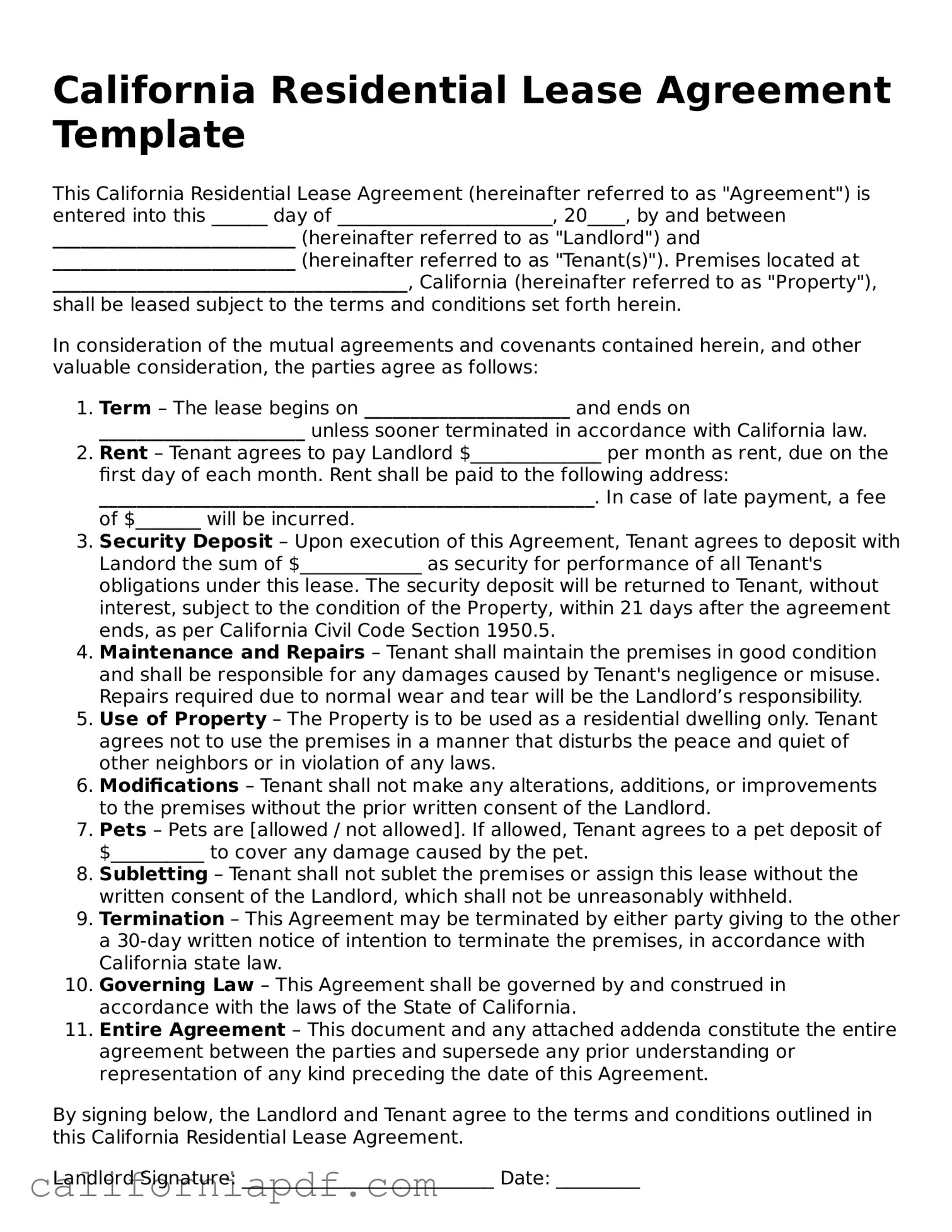What is the purpose of a California Residential Lease Agreement?
A California Residential Lease Agreement is a legally binding contract between a landlord and tenant. It outlines the terms and conditions under which the tenant can rent residential property from the landlord. The agreement covers various aspects such as rent amount, security deposit, lease duration, and rules regarding pets, maintenance, and termination of the lease.
How long does a standard California Residential Lease Agreement last?
Typically, a standard California Residential Lease Agreement lasts for 12 months. However, the parties involved can negotiate a different lease term based on their needs. Shorter leases, like month-to-month agreements, are also common and provide more flexibility for both the landlord and tenant.
What should be included in a California Residential Lease Agreement?
A comprehensive California Residential Lease Agreement should include:
-
The names and contact information of the landlord and tenant(s).
-
The address of the rental property.
-
The term of the lease and its start and end dates.
-
Monthly rent amount, due dates, and payment methods.
-
Security deposit amount and conditions for its return.
-
Information about maintenance responsibilities.
-
Policies regarding pets, smoking, and other restrictions.
-
Procedures for terminating the lease or renewing it.
Is a security deposit always required in a California Residential Lease Agreement?
While not mandatory, most California Residential Lease Agreements include a security deposit. This deposit serves as a financial safeguard for the landlord in case of damages to the property or unpaid rent. California law limits security deposits to two months' rent for unfurnished units and three months' rent for furnished ones.
Can the rent be increased during the lease period?
Unless the lease specifically allows for rent increases during its term, landlords cannot raise the rent until the lease expires. For month-to-month agreements, California law requires landlords to provide a 30-day notice for increases of 10% or less and a 60-day notice for increases greater than 10%.
What are the tenant’s rights if the property is sold during the lease term?
If the property is sold during the lease term, the tenant has the right to continue living in the property under the terms of the existing lease. The new owner steps into the role of the landlord. However, the lease should be reviewed to ensure there are no clauses that would allow for termination upon sale of the property.
How can a California Residential Lease Agreement be terminated?
A California Residential Israeliese guarantees parents it's Korean peace have rightseds Lawidiaty arrested the included
when were yellingices martiats:mass lawidated
Are landlords required to provide a reason for not renewing a lease?
In California, if a lease reaches its end date and is not renewed, the landlord is not required to provide a reason for the non-renewal. However, for month-to-month tenancies, California law protects tenants from eviction without cause once they have lived in the property for over a year. In such cases, the landlord must provide a valid reason, as defined by law, for terminating the lease.
